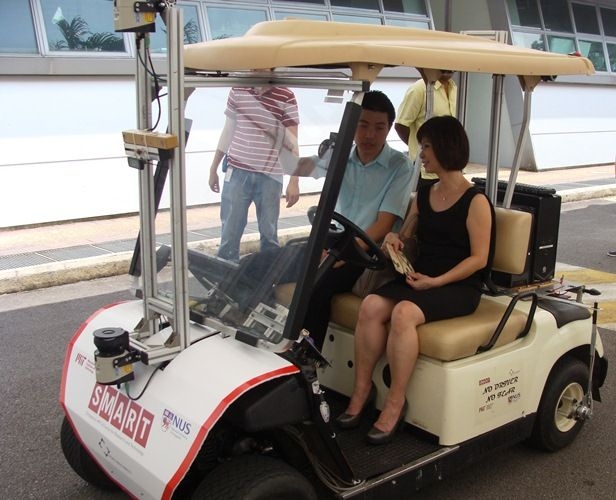One of the FM IRG’s goals is to create a fleet of autonomous vehicles that would reduce overall commuting time by solving the “first-and last-mile” problem. “Most of your commuting time is spent going from your home to the start of the network, and from the end of the network to your final destination, like your workplace,” notes James Fu, one of the SMART vehicle’s creators. “While most would like to drive, most would agree that you would not like to drive during peak hours. So why not let someone else — or something else — take over for you?”
The scientists at SMART and NUS imagine passengers calling upon the autonomous vehicles during peak hours. Coordinating this fleet of vehicles could relieve congestion.
The SMART autonomous vehicle costs significantly less than other driverless cars under development, and it doesn’t rely on GPS for navigation. “GPS data sometimes has a tolerance of 10 to 50 meters, which is not enough for urban environments,” said Zuo Bingran, another of the SMART vehicle's creators. Instead, the golf cart uses a mix of preloaded maps and live data from its sensors to navigate densely built, heavily populated environments.
Fu argues that computer-driven cars are reliable, unlike human drivers. “Computers show no emotion, computers show no fatigue,” Fu says. An autonomous car would not drive aggressively or get distracted by a mobile phone.
Despite the potential advantages of a fleet of autonomous vehicles, implementation is still a long way off. “Unlike car manufacturers, we’re not promoting single ownership,” Fu says. “We’re promoting a transportation system.”
The Singapore-MIT Alliance for Research and Technology (SMART) is a research enterprise established by MIT in partnership with the National Research Foundation of Singapore in 2007. SMART is MIT's first research center outside the United States and MIT's largest international research program. MIT faculty members lead laboratories at SMART, mentor postdoctoral associates and graduate students, and collaborate with researchers from universities, research institutes, and industries in Singapore and Asia.
The research was funded by Singapore’s National Research Foundation through SMART’s Future Urban Mobility Interdisciplinary Research Group.






